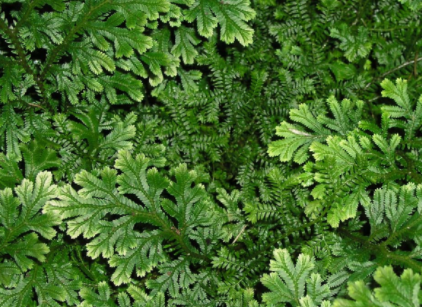
Heterospory is a character of
(a) Lycopodium
(b) Selaginella
(c) Equisetum
(d) Riccia
Answer
573k+ views
Hint: Heterospory is also shown by Salvinia. This plant is a pteridophyte that produces two different kinds of spores causing it to be more advanced than the rest of the members in its group. The advanced pteridophytes show heterospory character.
Complete step by step answer:
Heterospory is a character of Selaginella. In this plant, two different kinds of spores are produced i.e. microspores formed in microsporangia and megaspores formed in megasporangia. Microspores produce male gametophytes and megaspores produce female gametophytes. Heterospory is essential for seed habit. This is because in heterosporous plants, the female spores germinate within the sporophyte body and thus the germinated female gametophyte derives food and nutrition from the parent sporophyte. This retention of gametophyte inside the sporophyte is a precursor for the seed habit.
So here we can say that Selaginella is an important evolutionary link between pteridophytes and seed-producing plants.

So, the correct answer is ‘(b) Selaginella.’
Additional information:
Let us now study the other plants that are mentioned in the options.
- Lycopodium: It is a pteridophyte and is known as creeping cedars because it grows on the ground like a snake creeping along.
- Equisetum: It is also a pteridophyte and is also known as horsetail because the plant looks like the tail of a horse.
- Riccia: It is a bryophyte and the special feature about it is that it has the simplest sporophyte amongst all bryophytes. The sporophyte is so simple that it has no foot, seta but only the capsule.
Note:
- A very important feature of Selaginella is that we find rhizophore (a structure for support) exclusively in it.
- Selaginella is also known as the resurrection plant because during xerophytic conditions it shrinks into a ball and looks dry and lifeless. But when moisture is returned it expands and becomes green. This makes it look like the plant resurrected (born again).
Other examples where we find heterospory are Salvinia, Marsilea, Isoetes, Azolla, etc.
Complete step by step answer:
Heterospory is a character of Selaginella. In this plant, two different kinds of spores are produced i.e. microspores formed in microsporangia and megaspores formed in megasporangia. Microspores produce male gametophytes and megaspores produce female gametophytes. Heterospory is essential for seed habit. This is because in heterosporous plants, the female spores germinate within the sporophyte body and thus the germinated female gametophyte derives food and nutrition from the parent sporophyte. This retention of gametophyte inside the sporophyte is a precursor for the seed habit.
So here we can say that Selaginella is an important evolutionary link between pteridophytes and seed-producing plants.

So, the correct answer is ‘(b) Selaginella.’
Additional information:
Let us now study the other plants that are mentioned in the options.
- Lycopodium: It is a pteridophyte and is known as creeping cedars because it grows on the ground like a snake creeping along.
- Equisetum: It is also a pteridophyte and is also known as horsetail because the plant looks like the tail of a horse.
- Riccia: It is a bryophyte and the special feature about it is that it has the simplest sporophyte amongst all bryophytes. The sporophyte is so simple that it has no foot, seta but only the capsule.
Note:
- A very important feature of Selaginella is that we find rhizophore (a structure for support) exclusively in it.
- Selaginella is also known as the resurrection plant because during xerophytic conditions it shrinks into a ball and looks dry and lifeless. But when moisture is returned it expands and becomes green. This makes it look like the plant resurrected (born again).
Other examples where we find heterospory are Salvinia, Marsilea, Isoetes, Azolla, etc.
Recently Updated Pages
Master Class 12 English: Engaging Questions & Answers for Success

Master Class 12 Economics: Engaging Questions & Answers for Success

Master Class 12 Social Science: Engaging Questions & Answers for Success

Master Class 12 Maths: Engaging Questions & Answers for Success

Master Class 12 Chemistry: Engaging Questions & Answers for Success

Master Class 12 Business Studies: Engaging Questions & Answers for Success

Trending doubts
What are the major means of transport Explain each class 12 social science CBSE

Which are the Top 10 Largest Countries of the World?

Draw a labelled sketch of the human eye class 12 physics CBSE

Explain sex determination in humans with line diag class 12 biology CBSE

The pH of the pancreatic juice is A 64 B 86 C 120 D class 12 biology CBSE

Explain sex determination in humans with the help of class 12 biology CBSE




